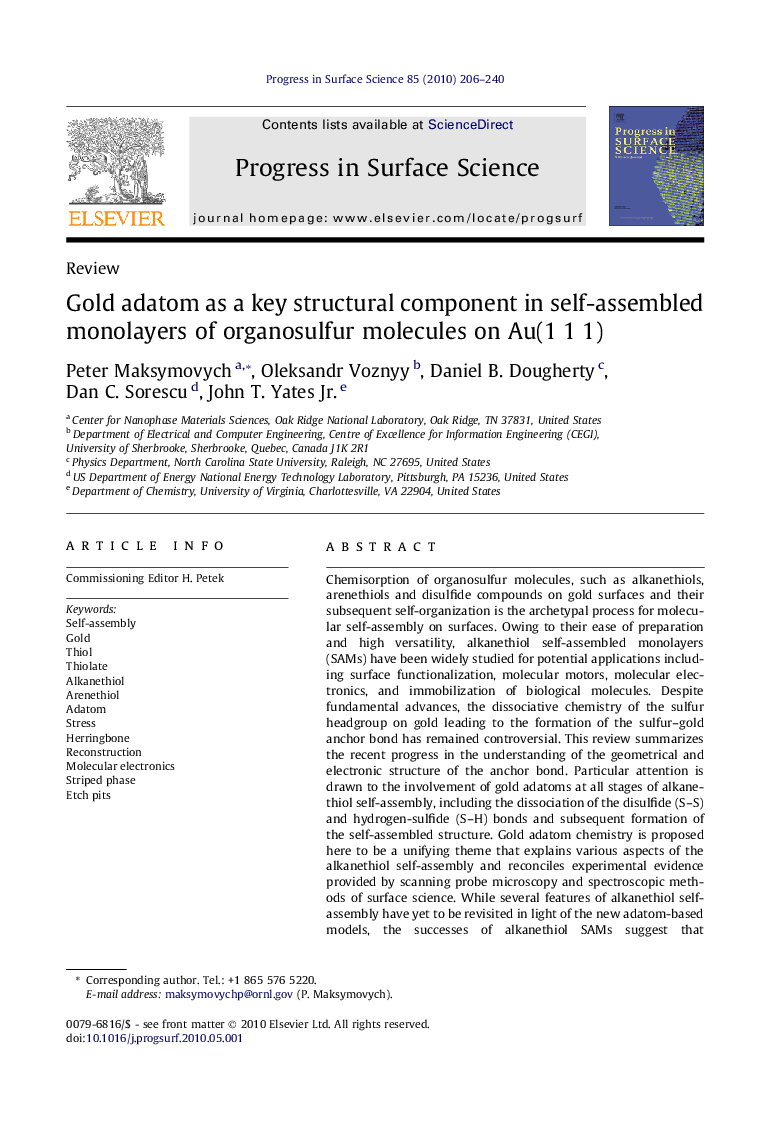| Article ID | Journal | Published Year | Pages | File Type |
|---|---|---|---|---|
| 5419990 | Progress in Surface Science | 2010 | 35 Pages |
Abstract
Chemisorption of organosulfur molecules, such as alkanethiols, arenethiols and disulfide compounds on gold surfaces and their subsequent self-organization is the archetypal process for molecular self-assembly on surfaces. Owing to their ease of preparation and high versatility, alkanethiol self-assembled monolayers (SAMs) have been widely studied for potential applications including surface functionalization, molecular motors, molecular electronics, and immobilization of biological molecules. Despite fundamental advances, the dissociative chemistry of the sulfur headgroup on gold leading to the formation of the sulfur-gold anchor bond has remained controversial. This review summarizes the recent progress in the understanding of the geometrical and electronic structure of the anchor bond. Particular attention is drawn to the involvement of gold adatoms at all stages of alkanethiol self-assembly, including the dissociation of the disulfide (S-S) and hydrogen-sulfide (S-H) bonds and subsequent formation of the self-assembled structure. Gold adatom chemistry is proposed here to be a unifying theme that explains various aspects of the alkanethiol self-assembly and reconciles experimental evidence provided by scanning probe microscopy and spectroscopic methods of surface science. While several features of alkanethiol self-assembly have yet to be revisited in light of the new adatom-based models, the successes of alkanethiol SAMs suggest that adatom-mediated surface chemistry may be a viable future approach for the construction of self-assembled monolayers involving molecules which do not contain sulfur.
Keywords
Related Topics
Physical Sciences and Engineering
Chemistry
Physical and Theoretical Chemistry
Authors
Peter Maksymovych, Oleksandr Voznyy, Daniel B. Dougherty, Dan C. Sorescu, John T. Jr.,
